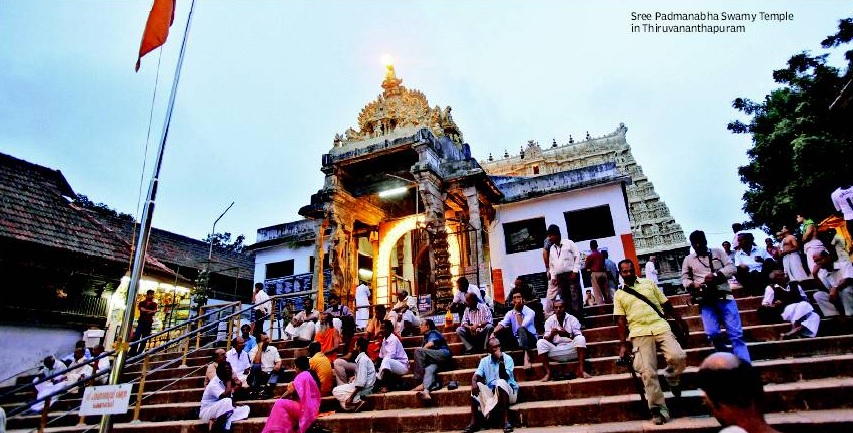Sree Padmanabhaswamy Temple
This is a collection of articles archived for the excellence of their content. |
Taboos and superstitions
When the man held responsible for opening long-bolted vaults at the Sree Padmanabha Swamy temple died recently, many whispered it was divine retribution. But places of worship across the country have strange superstitions Shobha John | TNN
The Times of India, July 24, 2011
India is a land of contradictions. While cutting-edge technology drives us forward, religious superstitions which befuddle the mind take us in the opposite direction. Even the sudden death of advocate T P Sundararajan, whose legal intervention led to stock-taking in Sree Padmanabha Swamy temple, was said to be “divine retribution”. Was it? Who can tell?
Superstitions abound all over India. Who are we to tempt the gods, ask believers. Take Renuka Temple in Kullu where goddess Renuka Devi is worshipped. Villagers are so fearful of inviting the wrath of her husband, Rishi Jamdagni, that they dare not look at her idol. Even the priest enters only after covering his face with a white cloth during Navratra and Fagli when the temple door is opened. Women throw their offerings from afar.
Shobha Ram, the priest, explains: “Everybody is aware of Jamdagni’s rage. He once got so angry with his wife that he ordered his son Parshuram to kill her.” Bir Singh Rana, a devotee, says he has never peeped into the temple. “Jamdagni’s curse can remain for more than 12 years. A woman lost her eyesight when she looked at the idol.” Believe it or not.
Fearing the rage of the diety
The Times of India, July 24, 2011
Ananthakrishnan G
There is fear that if the beliefs of the Sree Padmanabha Swamy temple aren’t honoured, the deity will be annoyed. From untimely deaths to warnings of natural disasters, the air is rife with rumours about the “retribution the evil-eyed have “brought upon themselves” in the past. The sudden death of T P Sundararajan, the man who got the temple vaults open, has only fuelled them. “This is just the beginning. Wait and watch, says one of his neighbours ominously.
“That's not right,” insist a temple priest, who is annoyed with the present administration of the shrine. “He was an ardent devotee and died a peaceful death.” But, locals still remember the difficulties faced by three persons who had entered the cellars of the temple in the past. “They didn’t survive for long, says a local man. But the families of two of them dismiss the rumours. “I don’t see any connection,” says Jalaja, the widow of former temple executive officer Col K Gopinathan Nair. He was entrusted with the job of gold plating parts of the main altar during the time of Chithira Thirunal Balarama Varma, the previous king. Some gold was taken out of the cellar for the job. “It used to be weighed in the presence of the king and other officials,” she reminisces. Both deaths occurred over a span of 18 months, says the other family.
As for stories of sound of ocean waves in the temple, historian M G Sasibhushan says it’s believed that there were underground escape tunnels from the temple to the sea and from the palace.
